
We kindly inform you that, as long as the subject affiliation of our 300.000+ articles is in progress, you might get unsufficient or no results on your third level or second level search. In this case, please broaden your search criteria.

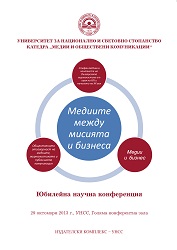
The book collection “Media Between Mission and Business” consists of 41 papers of participants from Bulgaria, who attended the scientific conference on the same topic, dedicated to the 160th anniversary of Prof. Stephan Bobchev, 10 years since the beginning of Media and Journalism’s degree program and 5 years since the foundation of Media and Public Communications department in the University of National and World Economy in Sofia, Bulgaria. The conference, held on October 28, 2013 in the UNWE was organized by the department of Media and Public Communications. The academic forum brought together lecturers, scientists, experts, PhD students, bachelor and master degree students from the fields of media, history and theory of journalism, advertising, public relations, economics, business communication, etc. The participants came from UNWE, Sofia University "St. Kliment Ohridski", The Bulgarian Academy of Science, Southwest University "Neofit Rilski "and presented their research topics in four conference sections. The first one was dedicated to Stefan Bobchev’ works in the context of the Bulgarian journalism from the end of the 19th and the beginning of the 20th century. The second section discussed the issues of media’s social responsibility, the professional and ethical aspects of the profession, the problems of media rhetoric, the development of online media, etc. The third part of the book collection presents topics from the field of public communication and is dedicated to event management, corporate social responsibility, intercultural communication in the business environment, institutional communication, etc. The fourth part, "Media and Business", collects the participant’s reports, who presented the mapping of the Bulgarian media market, the new opportunities for cultural industries financing, the relations between the media, the business and the society. The book collection is addressed to scientists, experts, lectures and students in the fields of communication, media, public relations, history and economics.
More...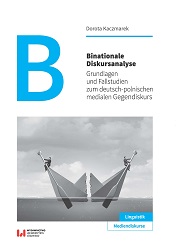
In general, the focus of the monograph “Binational Discourse Analysis. Foundations and Case Studies of the German-Polish Competitive Media Discourse” is the question of how the Polish-German political reality between 2006 and 2017 is medially re(constructed). For this reason, practices, methods and means, with the help of which German and Polish media players generate the discursive image of bilateral relations, are targeted and highlighted in this thesis. The concept of competitive media discourse corresponds both in its theoretical foundation and empirical methods to this research-oriented starting position. The competitive discourse shall be considered a competitor to the concrete discourse, “competition” being understood as various types, forms and manifestations of competition in the media between discourse and competitive discourse. In order to look at the question of how from different angles, the monograph comprises three parts, in which the focus is placed on the following aspects: - Localisation of the competitive discourse within the field of discourse;- Operationalisation of the competitive discourse by means of discursive description parameters such as action, power, text and knowledge; - Visualisation of the competitive discourse. In the theoretical part, the text and discourse linguistic foundations of the competitive discourse are thus determined, and its analysis programme is formulated in the binational context. For the practical implementation and confirmation of the correctness of theoretical assumptions, analysis model of the competitive media discourse based on discourse linguistics (AMEG) is designed, the application of which is verified on the basis of four representative case studies, namely the conflict over displaced people, over Erika Steinbach, over refugees and, in general, over mutual relations. Using the interdisciplinarily-based concept of the binational competitive media discourse, the aim of this thesis is to make a contribution to discourse linguistics characterised by text linguistics and to the multimodal text linguistics. In addition, a bridge to multimodal discourse analysis is to be built. The research results can also be useful for university didactics purposes.
More...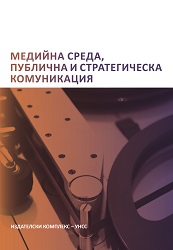
The book collection “Media Environment, Public and Strategic Communication” presents the reports of 62 participants in the international conference on the same topic, organized by the Department of Media and Public Communications in the University of National and World Economy. The conference held on October 20- 21, 2017 was located in Sofia, Bulgaria. The academic forum brought together lectures, scientists, experts, PhD students, bachelor and master students from the fields of media science, history and theory of journalism, media, advertising, public relations, economics, business communication, and etc. The participants came from UNWE, Sofia University "St. Kliment Ohridski", The Bulgarian Academy of Science, Southwest University "Neofit Rilski ", University of Library Studies and Information Technologies, American University in Blagoevgrad, University of Lower Silesia, Wroclaw, Poland, University of Bucharest, Ss. Cyril and Methodius University in Skopje, etc. The reports of the participants from Bulgaria, Poland, Portugal, Rumania, Serbia, Republic of Macedonia, are structured in several thematic priorities: contemporary aspects of media education, history of media and journalism, public communication, media and politics, cross cultural communication, business and the formation of media markets, international relations, world economy and media, social media. The book collection is addressed to scientists, experts, lectures and students in the field of communication, media, public relations, history, and economics.
More...
Cyberculture and critical studies on its history and its becoming a new cultural paradigm constitute one of the most important phenomena of technosociety, whose functioning is determined by new digital media and the internet. A fundamental thesis, specifying the direction of theoretical and interpretative efforts undertaken in the present work, is the conviction that cyberculture is based on the syntopia of art, science, and technology. However, before the definition of cyberculture is formulated, historical contexts of this phenomenon are outlined. The ideas of third culture and New Renaissance, put forward by John Brockman, are treated here as a theoretical basis for the forming of network society. Cyberculture should be considered as the conclusion of the processes initiated by countercultural performances in 1960s. Chapter Two broadly develops the concept of the syntopia of art, science, and technology. The art of technology and technologies of art refer to scientific background, as this phenomenon has its roots in the first manifestations of computer art in 1960s. After cyberculture has been defined in Chapter Three, the place of art in cyberspace and cyberculture is investigated in the following chapter. Chapter Five discusses the key forms of participation for cyber-art, i.e. the problems of interactivity (and interpassivity), immersion, and interface. Chapter Six is devoted to the theory and practice of documenting and presenting the art of digital media in the era of telematic and IT revolution. The key concepts that render the changing conditions of culture that used to be oriented towards data storage, and nowadays towards data transmission, are immateriality, metamediality, and networking. Archives with no physical location, web platforms taking over the function of art galleries, museums, libraries, and repositories set completely new standards of thinking about art in public circulation. The final chapter deals with the issue of virtual museums as a new territory of art, both the one that uses traditional media, as well as cyber-art. In the concluding part of the book, cyberculture is treated as a kind of revitalization of economy and the gift culture proclaiming a new revolution of everyday life in digital reality.
More...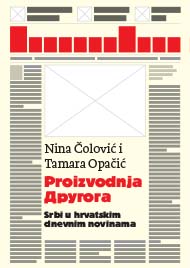
Despite the power and reach of newspaper articles – amid an overwhelming flood of texts about the Ustasha, Partisans, guilt and trauma – a profound analysis of the media language has been accorded much less attention than it could have been expected, especially considering the memories of WW2 and the war of the 1990s (1991–1995) and how they have shaped relations among the national groups in Croatia today. The scientists’ reluctance to dip their pen into the bloody history of the Balkan peoples has made it possible to leave the task of establishing what really happened to politicians, prime ministers, presidents, generals, soldiers and media owners – everyone whose interest is in these wounds never to heal. With awareness of the responsibilities that science and journalistic profession should have towards those who are increasingly affected by institutional violence, this research – which provides specific and elaborate recommendations for journalists – is a decisive attempt to merge the privileged voice of science with the voices that are not heard, voices of the members of one ethnic group, as well as the voices of “the others”, “not-our”, “their” civilian victims of war. In the belief that science does not exist by itself and because of itself, this research uses theoretical and methodological instruments of Critical Discourse Analysis (CDA), which puts itself at the disposal of those who have been deprived of their rights and denied social support. The results of qualitative analysis are complemented by insights obtained by statistical one. This allows the reader to focus on specific language mechanisms used to erect a wall between the Serbs and Croats but also to take a step back from the wall’s structure and grasp it in its entirety using percentages and figures. The year chosen for this analysis is 2015 because it abounded in issues whose presentation in the daily media had a strong impact on what would happen with members of the ethnic Serb minority, especially those who perished in either of the two wars (WWII and the 1990s war). This includes their inability to use their own language and script on the streets of Vukovar and attempts to erase the crimes of the Ustasha Independent State of Croatia (NDH) from contemporary memory.
More...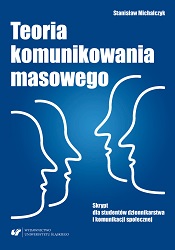
The purpose of this textbook is to present the students of journalism and social communication with the foundations of the modern theory of mass communication. The work is intended also for students who pursue other fields of study, which offer specialisation in journalism and communication (communicological specialisation), e.g. the students of political science, Polish philology, sociology or economics. The book may also be of interest to journalists, people employed in the sector of Public Relations, advertising, and promotion, as well as departments of various public institutions. It will certainly be of interest to specialists in the field of media studies, mainly the theoreticians of mass communication.The relatively complex subject of the theory of mass communication is explored by the author in two dimensions – he examines it from three perspectives:• the scholarly and historical perspective;• the scholarly and the current perspective;• the scholarly and personal perspective.Another purpose of the textbook is to introduce scholarly and didactic order and to categorise the problems of the theory of mass communication so that it may constitute a didactic basis for people who hold classes or lectures in this subject at Polish universities or in other institutions of higher education.The textbook consists of 10 chapters:• Chapter 1: The transdisciplinary nature of the science of the media and communication is an introduction to the whole array of the problems of the theory of mass communication. It discusses the essence and the structure of the discipline, which examines and describes the processes of communication and the role of the media in the said processes.• Chapter 2: The historical development of communication and the media furnishes historical data about the development of the media and (mass) communication during the course of a few centuries, with special reference to the last few decades, when a gradual “densification” of the phenomena and processes which led to the emergence of a media society occurred. The media-related and technological advancements were an important factor in the social development in all periods of history, but their particular intensification occurred after the Second World War.• Chapter 3: Communication – mass communication – the media defines the basic concepts, explains the relevant terms (mass communication, the media and their functions), describes the models of mass communication and constitutes an attempt at representing in a general manner the essence of the processes of communication with an indication of the differences between mass (mediated) and interpersonal (non-mediated) communication.• Chapter 4: Base theories – discusses 10 theories which are crucial for the theory of mass communication. Their presentation is preceded by an explanation of the concept theory (in the context of mass communication) and an indication of the criteria of the classification of theories.• Chapter 5: The middle range theories discusses the theories – ones which are popular in thescience of the media and communication – which are constrained in terms of area and semantics and which are empirically verifiable at the same time. The creator of the paradigm was Robert K. Merton, who reduced the gap between the world of great (general) social theories and the world of microscopic (particular) observation of communication-related phenomena. Each of the theories is briefly discussed in a certain logical order: the history, the theoretical premises, the research methods, empirics. There is also an indication of the similarities to other cognate theories and the relations between them.• Chapter 6: The forms of public communication. The actors and the processes introduces order to the area of mass communication due to the forms which occur in it, forms such as journalism, Public Relations and advertising.• Chapter 7: The structures and the contexts of the media analyses the subdisciplines and the constituent disciplines of the science of the media and communication which are particularly important from the point of view of the theory and practice: the media-related policy, the sociology of the media, the economics of the media, the media-related pedagogy and the media law. The chapter focuses on the explanation of the essence of each of the subdisciplines and their structures.• Chapter 8: The content of the media explains the basic problems associated with the fourth question of Lasswell’s formula (“what is said”). The content (the substance) determines the potential conditions of the social and cultural impact of mass media in a shorter and in a longer period of time. This content holds the foundations of manipulation and demagogy.• Chapter 9: The use and the reception of the media is devoted to the social and the individual reception of the media. It analyses above all the nature and the features of the recipients of the modern media (recipients as a “mass”, recipients as a target group, recipients as a commodity, recipients as a victim, recipients as an active, thinking user).• Chapter 10: The results of the impact of the media, which in a sense constitutes a conclusion of the whole work, explains the processes of the impact of the media upon the individual and the society. Each chapter is followed by test questions, which enable verification of the extent of the knowledge which was acquired in a given field. The textbook provides basic knowledge. In order to gain in-depth and extensive knowledge, one must consult the supplementary works which are listed at the end of each chapter. A complete listing is provided in the bibliography, which also contains additional items.
More...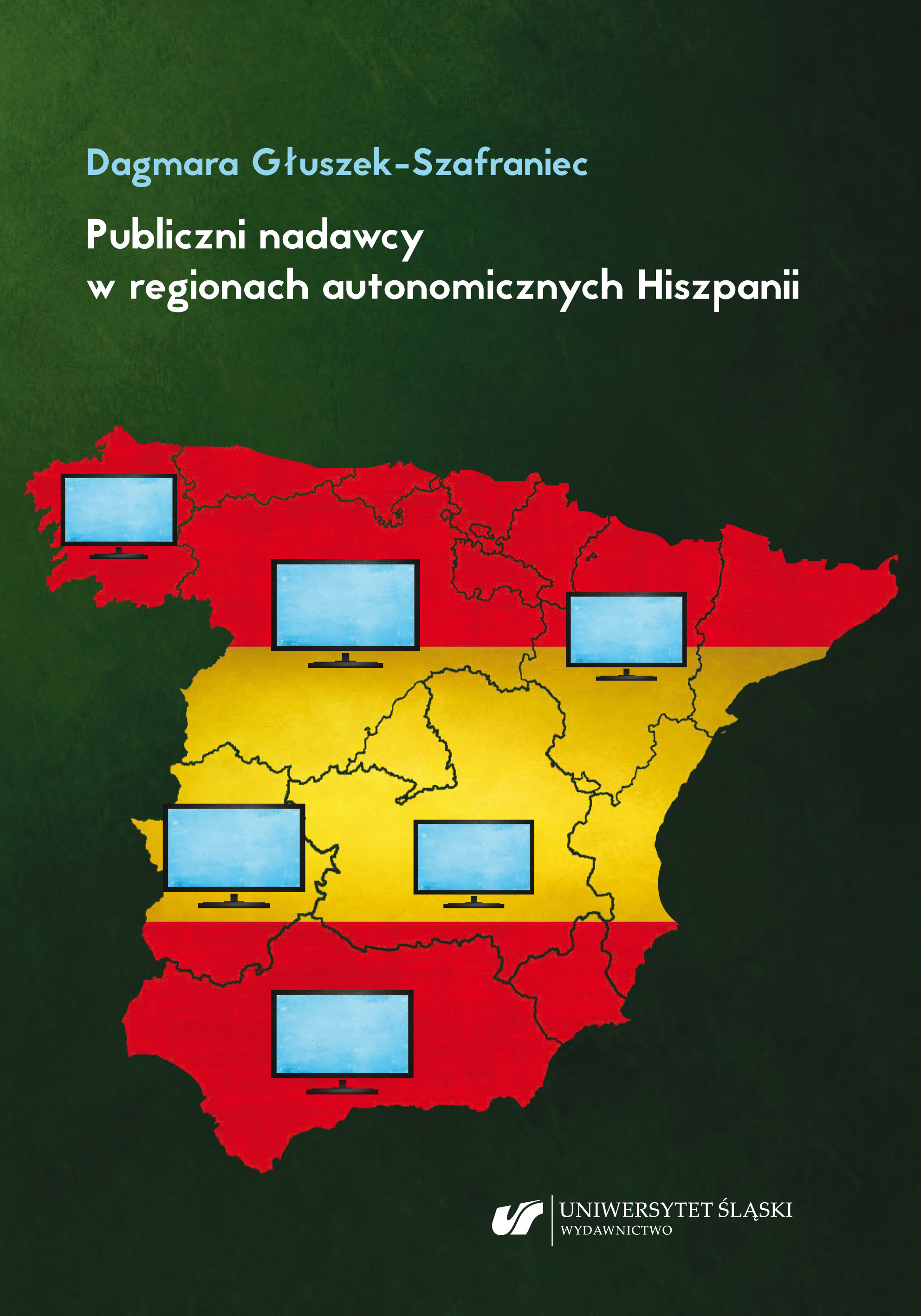
The volume has been divided into two parts. The first, theoretical part concerns the issues connected with the worldwide models of media systems, as well as the role of the public media, the methods of defining their mission, and the aims and tools of media politics. Further inquiry concerns the media landscape of Spain, in addition to the main legal determinants which regulate the media in the country. Moreover, the author conducts a review of the most important legislation included in the autonomous constitutions that concerns the possibility of establishing means of mass communication by autonomous communities. The second part constitutes an attempt at systematizing the strategies undertaken by autonomous governments to encourage growth of local public broadcasters with a regional reach. The author distinguishes four different attitudes towards the role of the public media as well as towards defining the public mission and the level of engagement in the process of broadcaster management by the political powers in the region, delineated on the basis of legal and institutional analysis of media legislation. It is possible, therefore, to distinguish four vectors of regional government activities which correspond to the various types of public media present in the autonomous regions of Spain: a basic type with the function of regional media, a mixed type with the inclusion of the private sector, a transitional type aimed at reforming the model of public radio and television management, and an advanced type, in which the regulations and institutions involved allow for a larger media autonomy.
More...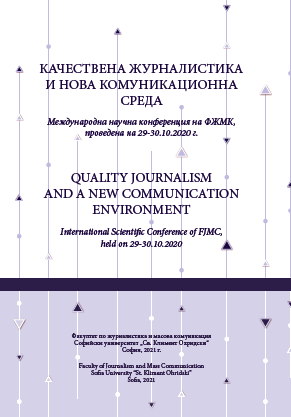
This volume “Quality Journalism and a New Communication Environment” collects the reports of the International Scientific Conference held on October 29 and 30, 2020 in Sofia under the same title and organized by the Faculty of Journalism and Mass Communication at Sofia University “St. Kliment Ohridski”. The conference took place in a difficult time of pandemic and critical point of our media ecosystem and was conducted through the video conferencing platform Microsoft Teams. Namely in crisis situations such as the current pandemic situation, which put the participants of the conference behind the cameras and microphones of computers, and not in a common conference room, we can see a return of confidence in traditional media that do not fabricate news, check facts, without speculation on people's fears. Despite the unusual way of holding the conference managed to achieve its goals: to meet journalists with many years of experience, researchers, scientists and teachers from Bulgaria, Europe and the world and to highlight the main issues related to quality media and the challenges to journalism in the new communication environment.
More...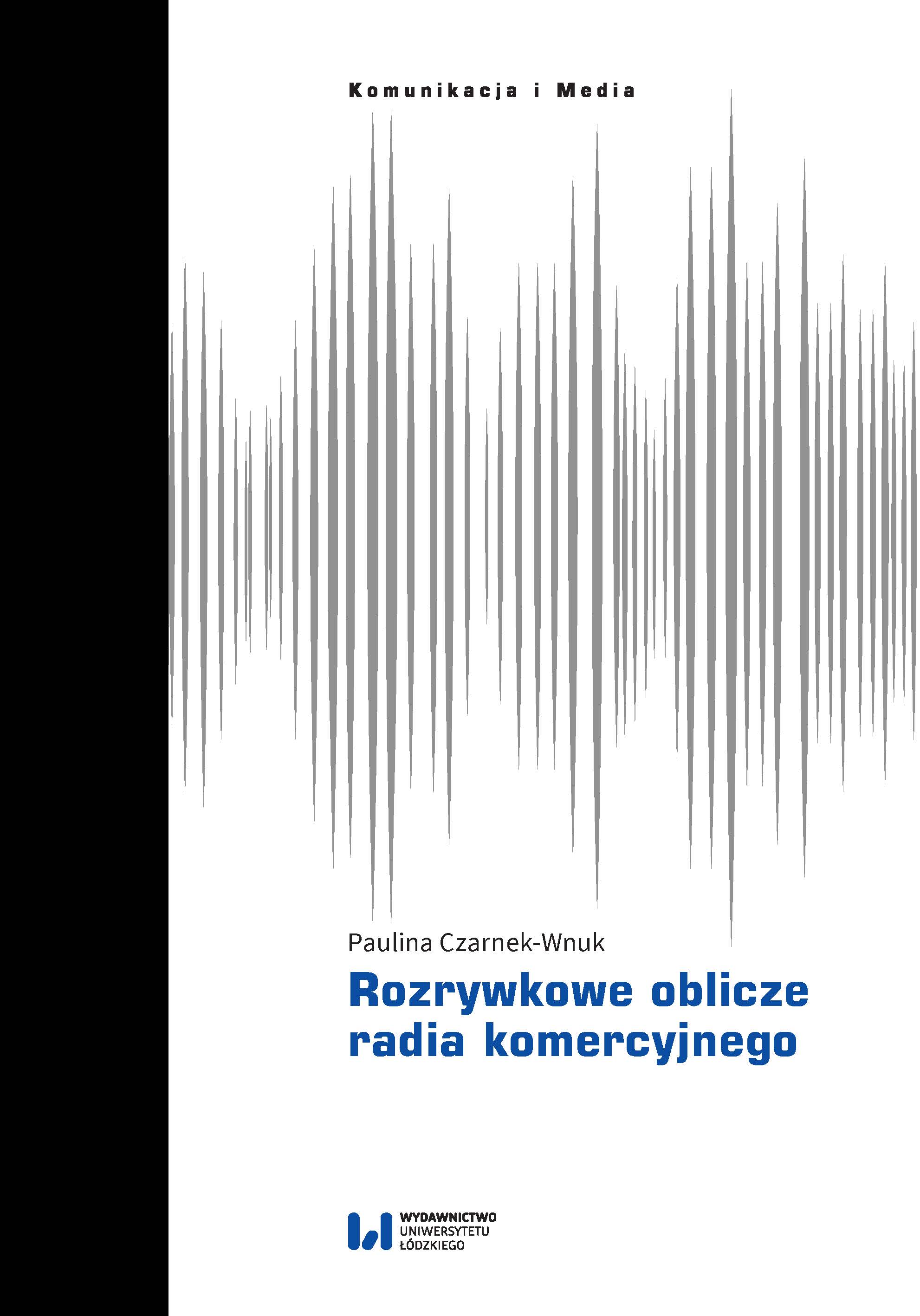
The book The entertainment side of commercial radio presents in a comprehensive way the strategies of selected private radio stations, i.e. Radio Eska, RMF FM and Radio Zet, related to the provision of entertainment by them. The aim of this publication was to analyze the offer of commercial radio stations in terms of entertainment content and activities present in them. The research hypothesis, which was verified in the course of the considerations, indicated that they (these contents and actions) constitute the core of the transmission of formatted private radio stations. The chosen research method was the analysis and logical construction with the elements of content analysis and case study, supported by theoretical considerations based on the literature on the subject. In the theoretical part, the author reviews various research positions in relation to entertainment and phenomena close to it (game, fun, free time, carnival), looks at the ludic role of the media from the perspective of, inter alia, functionalism or the critical theory, and finally characterizes the commercial radio sector. In the analytical chapters, she presents aerial and non-aerial entertainment activities, as well as initiatives taken in the space of the so-called new media (they are preceded by a short historical outline relating to the presence of play in the audio medium). The conclusions from the observation and interpretation of the discussed actions confirm the hypothesis articulated at the beginning. The entertainment offer of commercial broadcasters is quite extensive, though not always valuable, and is a combination of what they offer to the audience on the air, in the non-programming space or on the Internet.
More...
Computer games are one of the most exciting and rapidly evolving media of our time. The book combines perspectives from such fields as game theory, literary and film theory, and game studies, to outline a theory of what computer games are, how they work with the player, the main focus however is on how they work as texts and create meaning. It also provides an introduction to the analysis of computer games as well as combines methods of textual analysis and audience research, showing how the combination of such methods can give a more complete picture of these playable texts and the cultures they generate. One of the arguments is that game spaces can evoke narratives because the player is interpreting them in order to engage with them and is possible to approach game spaces not as pure visual spectacles but as meaningful virtual location. The book also explores how media give birth to various types of storyworlds and provide different ways of experiencing them, taking part in ongoing theoretical conversation focused on the problem how can narratology achieve media-consciousness.
More...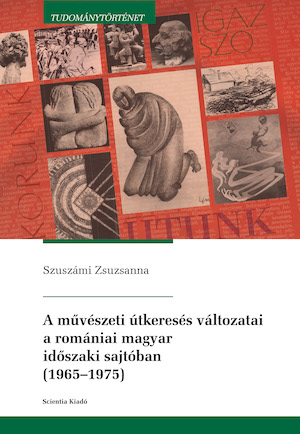
My book follows the endeavours and path seeking in fine arts between 1965 and 1975 as reflected in the contemporary press, more specifically in the most important cultural magazines of the age, namely in the weekly publication Utunk, as well as in Korunk and Igaz Szó. The other main area of this book is the evolution of fine arts criticism in these magazines. As a result, the research contains an analysis of the mode of communication after 1965 and discusses how the fine arts content started becoming increasingly free in the above publications, which years saw the publication of the most fine arts-related writings, and, finally, how the slogans and obligatory content praising the party and the system found their way into the publications again after 1972. The book is followed by an Annex, containing four interviews made with Zoltán Banner, the period’s editor of the arts column of Utunk, Lajos Kántor, the period’s columnist at Korunk, and Zsolt Gálfalvi, the period’s assistant editor at Igaz Szó. The interviews complement the image of the age at the level of oral history, but they also contain important data regarding the press of the time.
More...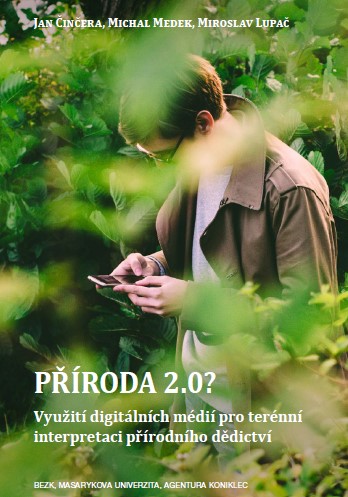
The publication investigates and analyses the quality of outdoor digital interpretation of nature heritage in the Czech Republic. The research part gives overview of digital natural heritage interpretation in the Czech Republic. In detail, it presents three selected examples: self-guided trails Svatojansky okruh and Po stopach Karoliny Svetle, and a learning point Kozakov AR. It analyzes qualitative data acquired by expert focus group and from visitors on the meaning and quality of digital interpretation. Further the work provides an instrument for evaluation of quality of digital interpretation, which is further applied for evaluation of the selected programs. In its last part, the text discusses possibilities and meaning of further development of digital interpretation of natural heritage in the Czech Republic and provides suggestions for increasing its effectiveness in strengthening relationship of visitors to nature heritage.
More...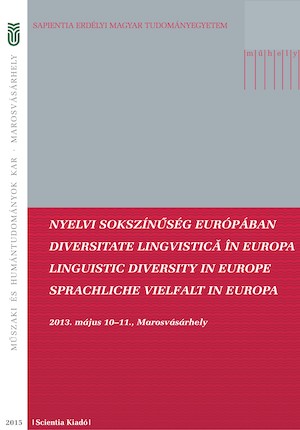
There might be several occasions in the history of a nation when due to a strong cultural shock it is forced to incorporate attitudes and principles that are very different from its national features into its way of thinking and actions and, as a consequence, into its communication as well. In a statement – especially if it appears in the media – language and content should be separated. I consider that, due to the fact that the media tools of the 21st century are much more efficient, existential principles and cultural conceptions, different from or even opposing the traditional Hungarian perspective, have gained power in public opinion. The lack of language skills does not offer protection against (not even European, but rather American) globalizing effects. Because of the globalizing content that has invaded all media, the consumer will get an American product even if information is conveyed in his mother language. This study analyses the globalizing structure of the content of television programmes.
More...
The study deals with the understanding of morality by members of the Transcarpathian Hungarian minority, with special focus on political morality in the politically tinged texts. In the studied corpus of Transcarpathian political morality, Lakoff’s (2002) statement seems to be proved, according to which the understanding of morality of those having conservative values can be traced back to the STRICT FATHER family model, while in the centre of understanding of morality of those with progressive thinking we can find the NURTURANT PARENT model. The study aims to clarify the relationships between these concepts by illustrating them with language examples put into a theoretical framework.
More...
While newspapers and magazines have a more restricted, more uniform and somehow more specialized audience, radio and television stations have a larger public, with a heterogeneous cultural background, disposing of different understanding capabilities. All these characteristics demand that these auditory and audiovisual broadcasts be as accessible as possible, allowing the viewers to understand directly, without any difficulty, the meaning of the message. The text, formulated beforehand and primarily targeting the visual receptor, i.e. the eye, must be reformulated, rewritten so that it can address the auditor’s ears. This research upon the adequacy of Hungarian media texts is part of the one carried out by Sapientia University, Faculty of Technical and Human Sciences from Târgu-Mureş, the Department of Applied Linguistics in collaboration with the National Audiovisual Council. Our research focused on the quality of the Hungarian language that was used in the Hungarian audiovisual media in Romania. Since 2010, we have conducted two weeks of monitoring annually, focusing especially on news programmes and talk shows. From a linguistic viewpoint, we monitored the verbal interactions and written messages (titration, crawls) delivered by the editors and media workers, neglecting the interventions of guests.
More...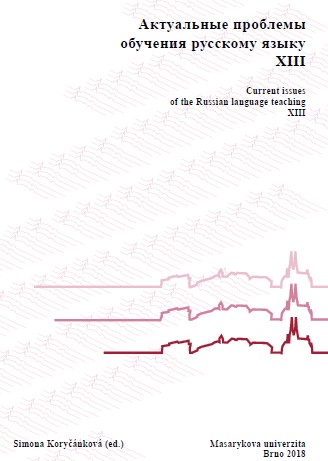
Information-analytical articles are an integral product on the media market. They not only inform society about the latest events in the country and abroad, but also give the author the opportunity to express his judgement of these events and the ongoing processes. This opinion is often expressed through the use of a language game that perform the evaluative function, and at the same time a large impact factor on the recipient. Effective impact of the media is one of the key factors in the struggle for the audience, since in many ways their existence depends on it. In our article we will present how effective mean of influence is the language game, focusing on its varieties. The interpretation of this concept is ambiguous and two main approaches to the language game can be distinguished. Some researchers consider the language game to be a deliberate violation of the norm, others see it as a deviation from certain rules, but within the limits of the norm. Despite this distinction, the notion of a language game, in modern linguistics, refers to the sphere of verbal communication, where it is viewed as a rather decoration of speech, which usually has the character of pun, joke, etc. That is why the language game is presented in the language of modern media quite widely and diversely, performing, above all, two functions: evaluative and linguistic.
More...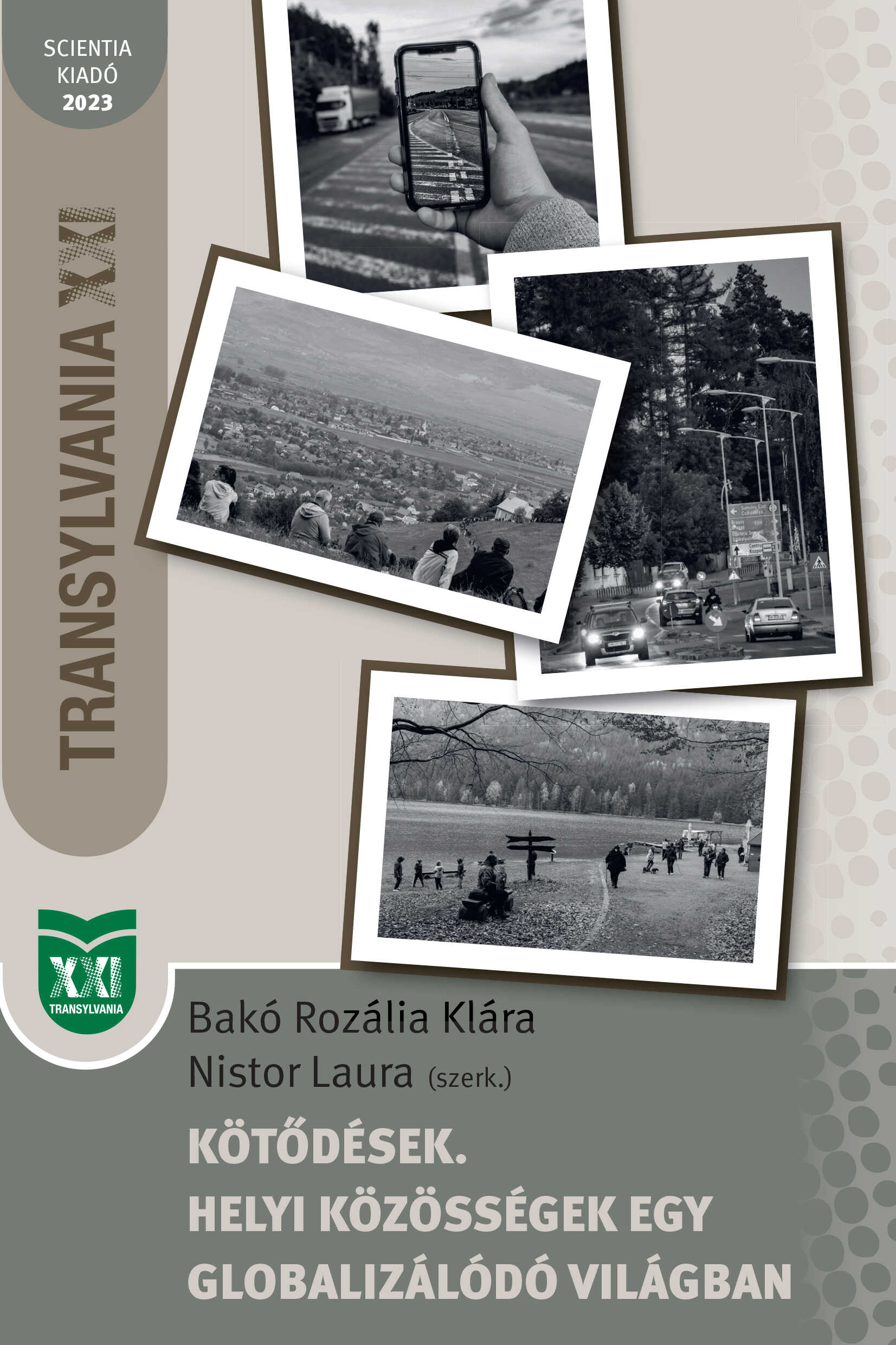
The discourses of the “Szekler Ecovillage” Facebook group are dominated by two main topics: we can see the themes of tradition and innovation unfolding in the search for solutions to the present global crises. Investigating the public communication of the group, it can be stated that the emphasis is on preserving, rediscovering, reviving and relaunching tradition. However, the issue of innovation is also significant. This study examines how the texts of the two orientations appear in group communication.
More...
The concept of meme was introduced to the public consciousness in1986 by Richard Dawkins. Perhaps he himself did not think how much brainstorming and controversy this concept would generate, or that it would now create a separate field of research. Nowadays, thanks to advances in technology, the world has accelerated considerably: we travel faster, we communicate faster — as our messages reach the recipient almost immediately — and because of this, perhaps every new generation thinks faster than the previous one. This development is exponentially true for memes. Relying on the literature, in my study I distinguish between classical and digital memes and examine their presence and effects in the society in an overview-like way. After reviewing the two categories, I will illustrate the issue with several examples for each category. In line with Dawkins’s theory, I interpret culturally rooted phenomena that are, by definition, memes: e.g. handshake, clothing fashion and commercials. In the case of digital meme, analysis of StarTrek and “Trollfoci” memes makes interpretation possible.
More...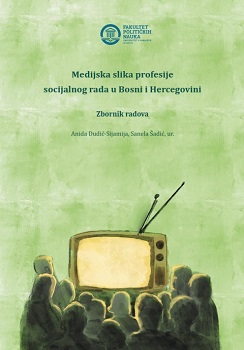
Naučna konferencija sa međunarodnim učešćem na temu „Medijska slika profesije socijalnog rada u Bosni i Hercegovini“ održana je 6. decembra 2024. godine na Fakultetu političkih nauka Univerziteta u Sarajevu i predstavlja prvu konferenciju u Bosni i Hercegovini na kojoj su teoretičari i stručnjaci iz prakse sistematično analizirali potencijale i izazove medijskog predstavljanja profesije socijalnog rada.
More...